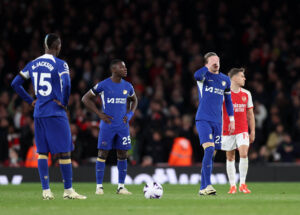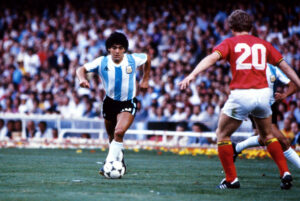Modern football sees a liability in what was once the most coveted position in football. This article analyses and compares the role in various phases post-2000. How is the decline of number ten role affecting football?
The Decline of the Number Ten Role
Understanding the Role
Post-2000, the role has undergone plenty of subtle changes. The demands on the player occupying this space have changed as well. Broadly speaking, there can be two kinds of number tens; one who primarily occupies spaces between the middle and last third of the pitch whilst looking to create chances from there. The other occupies the same space but arrives late in the box and almost acts as a second striking option. This is simplifying the process of understanding the roles, and without the defensive aspect. But just assuming these parameters, it is possible to analyze their strengths and limitations.
When playing with a creative number ten, the player occupies spaces between the lines often dropping deep. The greatest strength of this role is the fluidity that it provides. Where managers try to drill in rigidity in their defensive shape, this fluidity helps in dragging defenders out of position. This, in turn, opens up spaces for forwards and supporting midfielders to run in behind or into dangerous areas in the box.
When playing with a second striker type of 10 (or a nine and a half), the objective of the attacking exercise is to supplement the striker with support from midfield. The perfect example of this kind of player is Aaron Ramsey. He plays further up the field than a holding midfielder but starts from midfield and ends up in the box. Teams playing with orthodox wingers who put in crosses for attackers to latch onto often use this tactic.
Fulcrum of Past Teams
Brazil
In the 2002 World Cup, Brazil had a squad full of talent, flair, and bravado that few teams could match. With Ronaldo topping the goalscoring charts, the team won their fifth World Cup. That Brazil side had some of the best attacking talents in the world at the time. The attacking philosophy of the side relied heavily on their attacking midfielders.
Both Rivaldo and Ronaldinho often occupied spaces behind the striker. Both dropped deep and created chances through their dribbling or incisive passing. In the case of Rivaldo, his late runs into the box along with his finishing prowess made him one of the outstanding players of the tournament (The former Barcelona man won three man of the match awards in that tournament alone).
Europe
The trend continued in the next few years as well. At the club level, most European giants employed classical number tens like Zidane, Kaka and Rivaldo. Arsenal’s invincibles played the way they did through Dennis Bergkamp. Chelsea had their time with Zola. Deco emerged as a perfect 10 under Mourinho as Porto lifted the 2004 Champions League title.
A lot of modern players have idolized these players and shaped their game imitating them. The abovementioned players all possess excellent technique and have the pinpoint vision to compliment it. This role heavily influenced football as managers started playing multiple number tens in the same side and often fielded similar players as wider midfielders. The dominant Spain side between 2008 and 2012 used this heavily.
The use of the likes of David Silva, Mata, Mesut Ozil and James Rodriguez on the wings became more and more prevalent post-2012. Mesut Ozil is the perfect example of a player who lost his touch because of the same. Isco is another midfielder who’s been shifted wide to fit into a system as against building a system around him. But these players still displayed brilliance as teams could not figure out how to deal with their technical prowess.
The Decline
The decline of number tens doesn’t have one particular reason but stems from multiple tactical advancements in the game. The laziest justification of the decline is that number tens are usually fragile players who don’t provide the work rate in defensive transition, especially when occupied out wide.
This is partially true as evidenced by Ozil, Isco, Mata et al. being bullied off the ball and then not covering overlapping runs by full-backs. However, the criticism is flawed since the players are being used out of position anyway. After all, if Jorginho isn’t expected to contribute with goals, then why should his attacking counterpart be expected to track back all the time?
This is highlighted even more since it is uncommon to see many holding midfielders (the player that the ten has to mark positionally) marauding into attacking spaces. However, the main reason for the demise of number tens is that more and more footballing philosophies are shifting focus to attacking through wide areas.
This has seen an increase in attacking full-backs like Marcelo, Jordi Alba, and Andrew Robertson among others. The cause of this could be the increasing usage of inverted wingers who cut in and occupy central spaces. This congests the area that the ten would ideally want to operate in, making the attacking playmaker a scapegoat for coaches. Managers often use these attacking full-backs to substitute creativity from midfield.
Guardiola and Klopp’s Solutions
Pep Guardiola and Jurgen Klopp have used different ways to counter this issue. Pep has used two tens as fluid players ahead of a shielding midfield presence. This suits his possession-oriented style. It allows wingers to remain forward and hold width while using ball movement to open up spaces for them to run into.
Klopp has solidified his midfield by playing energetic box-to-box players in midfield who can press with intensity. The creativity comes in the form of crosses from attacking full-backs. This leaves the wider areas prone to counter-attacks but the middle of the park is packed with players to cover for any incoming crosses if the counter-attack does indeed come to fruition. These philosophies result in the altering of formations. Midfield diamonds have changed to a three man midfield in most cases. This eliminates the need for a traditional number ten.
Impact on the Game
The latest transfer window shows the biggest impact. James, Dybala, Coutinho and Isco are all out of favour at their respective clubs. All of this while Aaron Wan Bissaka moves for a world-record fee on the back of a decent season whilst finishing 12th in the Premier League.
Football is ever-changing and roles and positions often have a rotational time-cycle. Inverted wingers are the trend today but they might not be in the coming years. Attacking full-backs seem like a great idea this season but could prove disastrous in the next.
However, the decline of number tens has proven to be a sad tale for lovers of technical, aesthetic football. Where football was cherished for Zidane’s pirouettes and Ozil’s vision, it’s now revered for its pace and power. Perhaps the difference is only in perception- even Drake can make millions from his music. But he can’t ever please the masses who sing YNWA at Anfield every fortnight.
Main Photo






